Review: This is Lebanese food done right
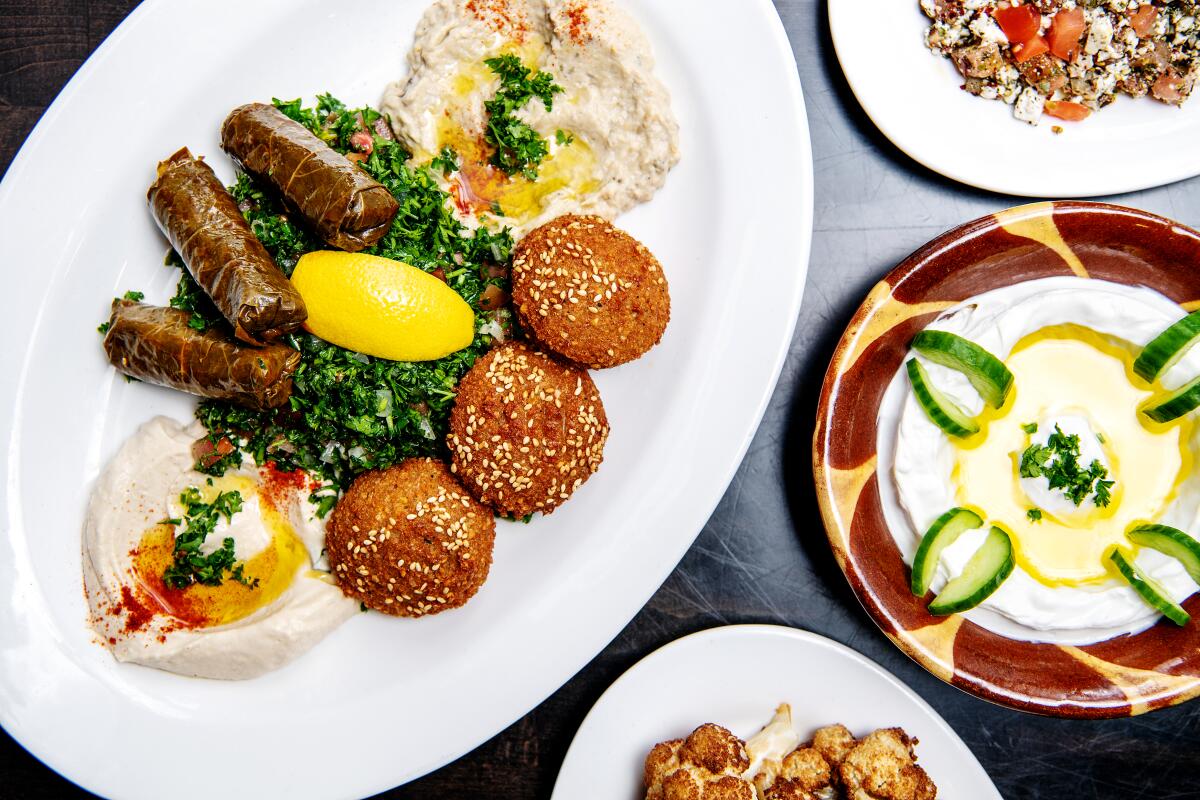
Samke harra means “spicy fish” in Lebanese Arabic, though the dish — usually flavored with some variation of garlic, cilantro and nuts — rarely smolders with anything more than a flicker of cayenne. Originally a staple of Tripoli, Lebanon’s northern port city, it has been absorbed into regional cooking styles all over the country. It might take the form of a whole sea bream, baked, stuffed and presented room temperature as part of a buffet; in fancier Beiruti restaurants, a variation using fillets can show up so submerged in tahini sauce that it resembles quenelles floating in eggy cream.
At Mona’s Kitchen in Tarzana, the samke harra evokes casual seaside seafood shacks. Owner George Marjik splays and grills trout until its edges blacken. Ground walnuts, minced garlic and mossy patches of chopped cilantro blanket the surface. Tahini sauce is served on the side. It isn’t a traditional addition in Tripoli, but I like spooning a few tablespoons over the fish. It smooths out the seasonings without masking any of the essential flavors.
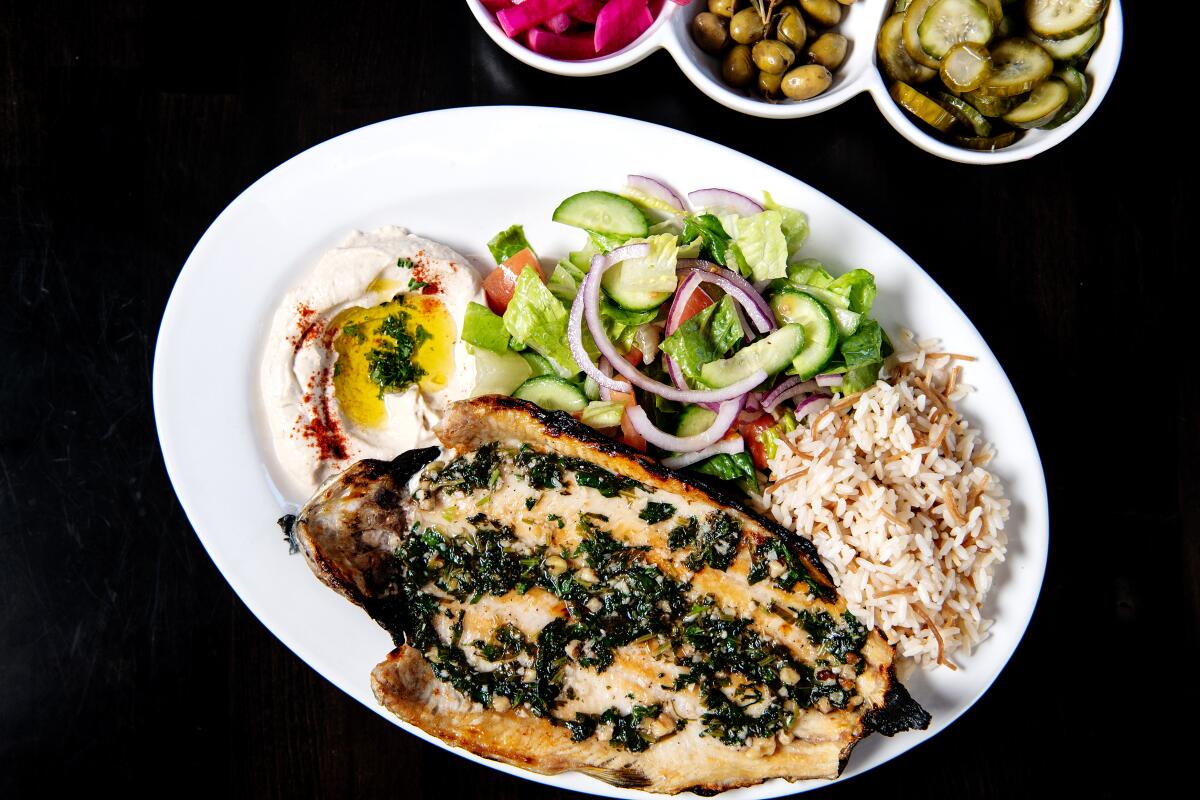
The trout stands out as a benchmark of the talent behind the stove, and as a relative novelty among its offerings. Mona’s Kitchen covers the standard repertoire of many Lebanese restaurants in America: mezze (dips and meats in many forms), tartly dressed salads, kebabs, sandwiches. But Marjik pulls off plenty of these dishes with a level of finesse that makes the restaurant worth a jaunt for lovers of Lebanese cuisine.
When I first ate at Mona’s Kitchen, something about the general mix of the menu felt familiar to me. Founding chef Mona Kalout was previously chef at Hayat’s Kitchen, a decade-old North Hollywood institution, and brought with her many of the dishes she’d mastered there. Kalout is Marjik’s ex-wife; she moved on from Mona’s Kitchen not long after its opening in March. Marjik took over with plenty of restaurant experience: He’s part of the family that runs branches of Zankou Chicken, the chain that started in Beirut in 1962 and has a dozen locations throughout Southern California.
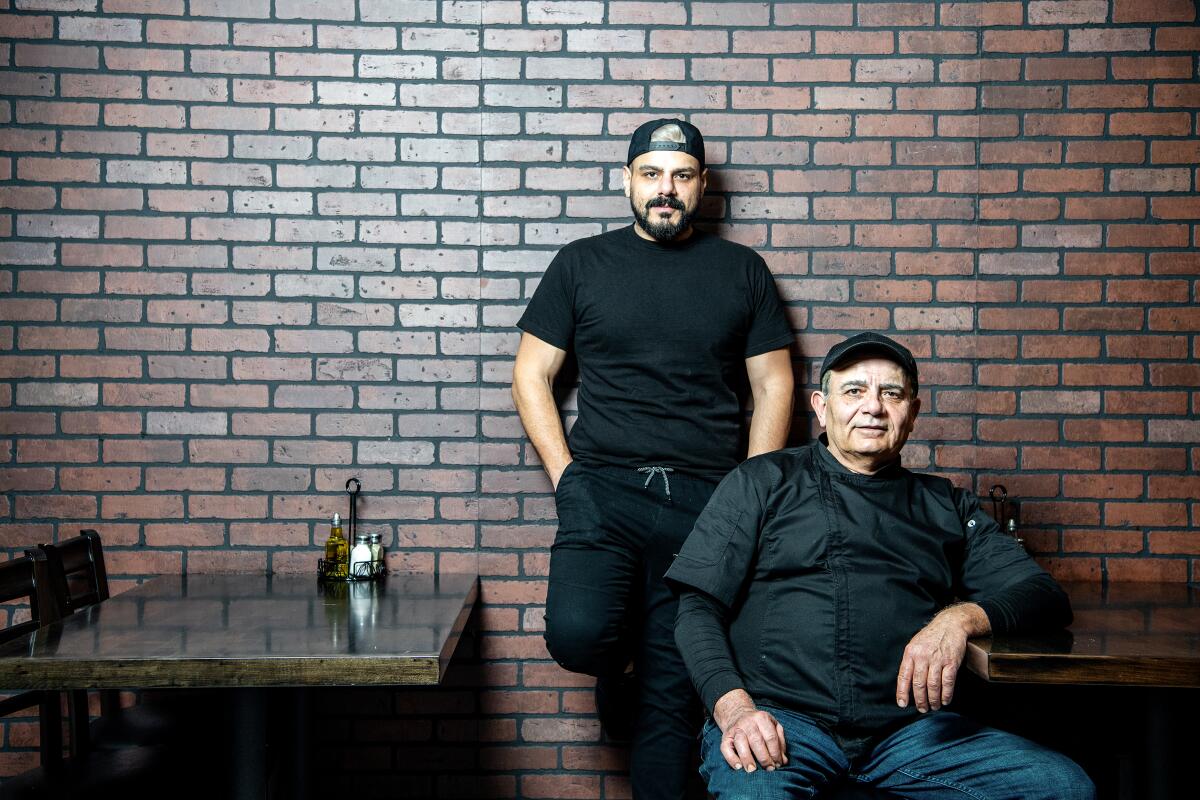
For my Lebanese friends, tabbouleh is a litmus test. Marjik’s measures up. Very little bulgur bulks out the parsley and tomato — just enough to create an occasional ripple of contrasting texture. The effect is of buoyancy and brightness.
The tabbouleh holds its own among an appetizer sampler of the usual players: baba ghanoush, lemony grape leaves, falafel, hummus. The falafel worthily channels versions you’ll find at famous stands in Beirut such as Tabbara, the spheres flattened to doughnut shapes and speckled with sesame seeds to reinforce the pronounced crunch. In America’s golden age of hummus, Mona’s is just average: kind of runny, a little sour under its garnish of smoked paprika.
This is also an era when steak tartare has made a raging comeback in the United States; I say now is the time for us to finally understand and appreciate kibbeh nayyeh, a national pride of Lebanon. It is a combination of lean meat freshly ground to a silky — sometimes even fluffy — paste, gently spiced and kneaded with fine bulgur. A liberal pour of good olive oil alchemizes the flavors and textures. It’s eaten with onion slivers, mint and often thin flatbread. The dish is sublime in its intended purity; if made with skill it needs no gilding.
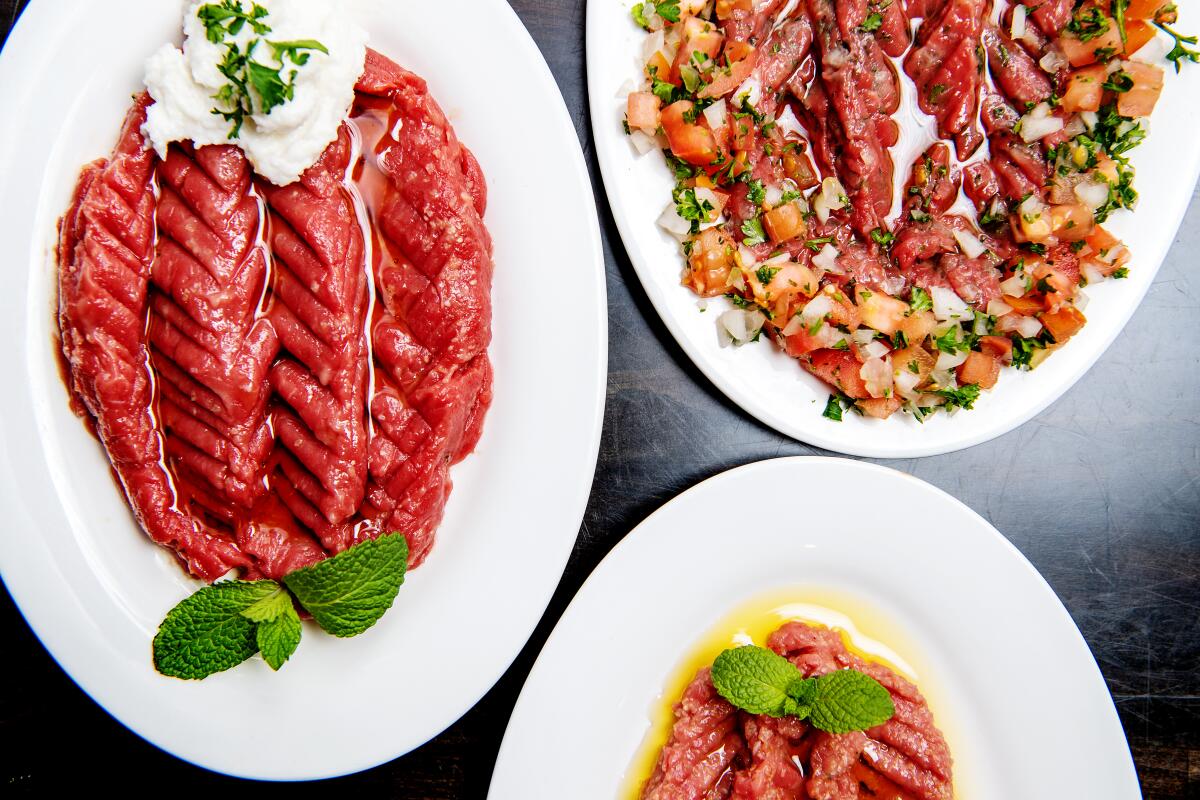
The Lebanese typically use lamb. Outside of Dearborn, Mich., with its booming Arab American population and restaurant culture, most of the kibbeh nayyeh I eat in American restaurants is beef. Marjik tells me the lamb he can buy affordably in the U.S. has too strong a taste for the dish. Lebanese-Syrian cookbook author Anissa Helou posits that lamb is sold too old in this country for the required mildness. While I’m badgering American lamb associations for remedies, I will enjoy Marjik’s properly glossy variant made with beef.
The menu lists two other bulgar-less riffs on nayyeh, one with more spices and another directly garnished with parsley and onions and spices. It’s common, particularly in the more rural areas of Lebanon, to fleck the dish with peppery-sweet seven-spice or straight cumin or cinnamon. Marjik’s hand is too restrained with the spices; stick with his classic kibbeh nayyeh. The tingle of allspice comes through appealingly in his fried version of kibbeh, stuffed with ground beef and pine nuts and served with a side of cooling yogurt.
Meat in several forms is the forte at Mona’s Kitchen, as it is at many Lebanese restaurants here. (One beautiful day the lushness of Lebanon’s Beqaa Valley, which yields a bounty that rivals Central California, will see its clear reflection in the vegetable dishes on menus at L.A.’s Lebanese restaurants. The moment is likely a ways off.)
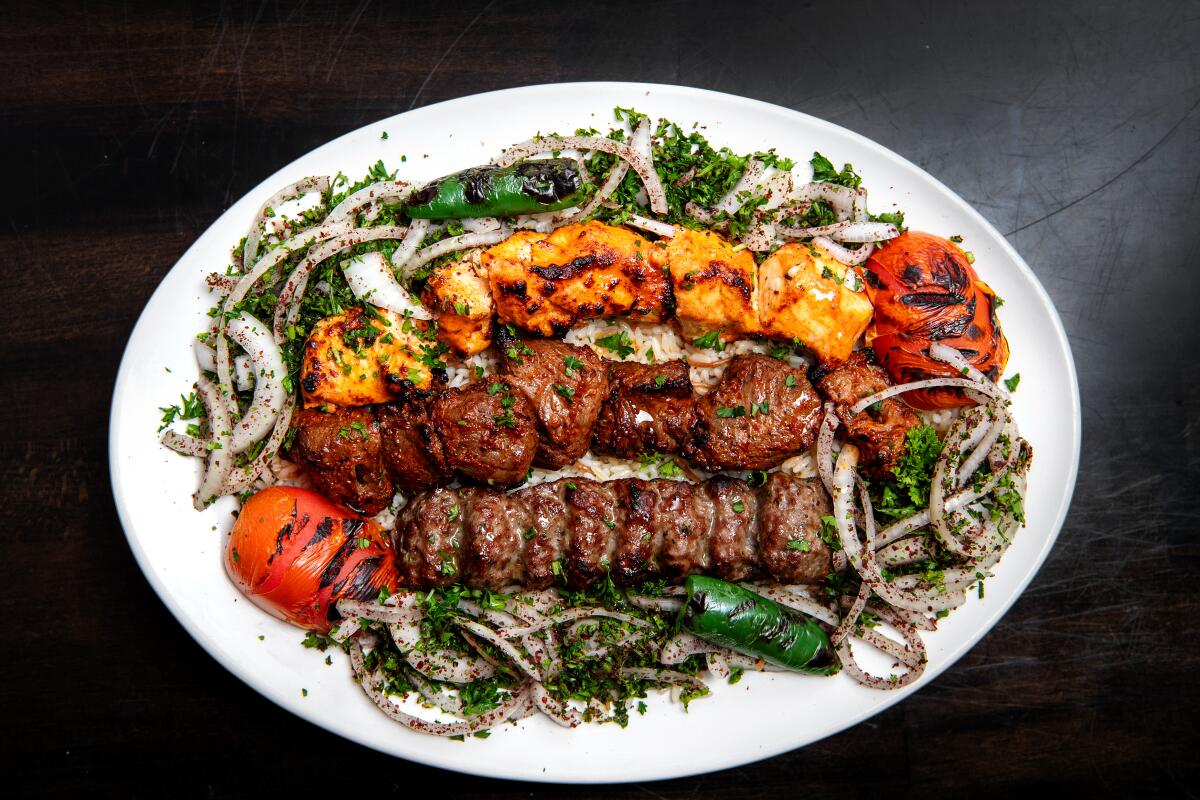
Pomegranate molasses jangles melting chicken livers with its distinct sour-sweetness. Beef and chicken kebabs are easy to wolf down, tender and precisely salted. Makanek — plump beef sausages scented with clove, nutmeg and white pepper and varnished with lemon juice — outpaces soujouk, its denser, drier cousin.
Marjik has a gift for sandwiches; he uses markouk (thin flatbread) to wrap kebabs and shawarma into tight bundles with pickles, herbs and often a smear of garlicky toum. There’s a beef tongue number with both toum and pickles that rivals Attari Sandwich Shop, an Iranian standard-bearer in Westwood, for beef tongue sandwich supremacy.
Customers often pick up sandwiches and the other dishes they order to go. Mona’s Kitchen is wedged into a corner slot in a small strip mall, between pet groomers and a floral shop. There is little ambience to the dining room. Nonetheless, the often-quiet restaurant surges to life when you bring a couple of friends and order mezze and kebabs and samke harra for a feast.
The restaurant doesn’t serve alcohol; this would be the time to root around in your cabinet for your long-forgotten bottle of arak, the anise-flavored spirit similar to Greek ouzo. Marjik smiled when I showed up with mine. I watched the arak turn from clear to cloudy as I added ice and water; the restaurant’s lone server had brought them for me. I offered some to him and Marjik. They waited until the end of the meal and then came over. “Kasak,” they said. Your glass to my glass. It was near closing. They took their arak to a small table set up just outside the entrance. I nibbled the complementary baklava they’d dropped off and sipped the last of my own drink, content.
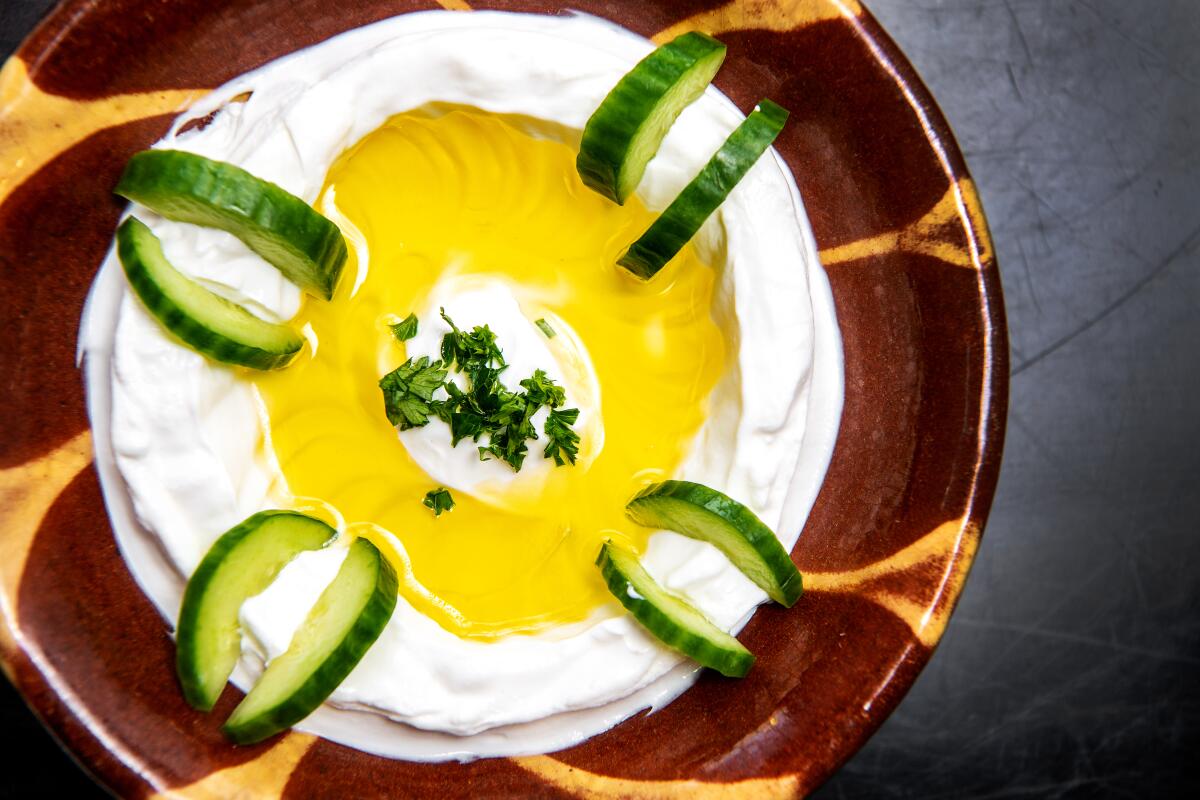
Mona’s Kitchen
Location: 18970 Ventura Blvd., Tarzana, (818) 708-8986.
Prices: Appetizers $5-$16; sandwiches $7-$10; entrees $10-$24; desserts $1-$7.
Details: Credit cards accepted. No alcohol. Lot parking. Wheelchair accessible.
Recommended dishes: Kibbeh nayyeh, fried kibbeh, samke harra (grilled trout), beef tongue sandwich, mixed grill.
More to Read
Eat your way across L.A.
Get our weekly Tasting Notes newsletter for reviews, news and more.
You may occasionally receive promotional content from the Los Angeles Times.







